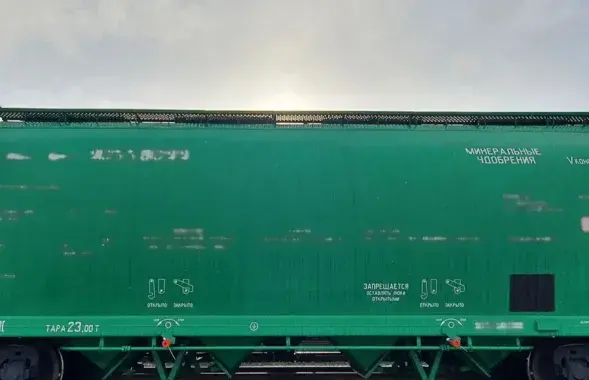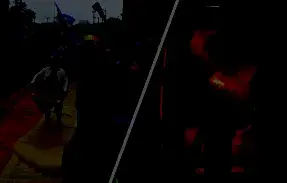Are environmental risks of Astravets nuclear station calculated properly?
A possible ulltimate design-based accident will not even lead to civil protection measures, official sources maintain. But Finnish specialists make a 10-time worse forecast that Belarusian optimistic nuclear experts. The Evaluation of Impact on Environment reviews two options of accidents at the Astravets nuclear power plant. The first one -- the ultimate design-based accident -- is a technical failure the consequences of which can be controlled. The second option is a non-design-based accident the affects of which can onlt be forecasted.
Naturally, we are concerned by the second type of accident -- the one that took place at the Chernobyl nuclear station 23 years ago. A Belarusian scientist who asked to be anonymous says:
“There have been only two non-design-based accidents in this part of the world. The first one was when a reactor at a Soviet submarine exploded. The second was at the Chernobyl nuclear power plant".
In the table below, we compared the forecats for the heaviest fall-outs, contained in the Evaluation of Consequences on Environment by the Baltic nuclear station and Astravets nuclear plant as well as the factual fall-out during the accident at the Chernobyl nuclear station:
It is obvious that the consequences of such an accident at the Astravets nuclear station could be much heavier than at the Baltic nuclear plant. But Russian and Belarusian ecologists doubt both figures. Ahead of the public hearings in Astravets, they compared the Belarusian evaluation of environmental risks with a similar document on a Finnish nuclear station in 2006. Irina Sukhiy, chairwoman of Ecodom non-governmental environmental group says::
“We studied the document evaluating the Finnish nuclear station (the reactot is of the same type and the same power. Finns forecast 10-time worse consequences. In terms of the square, they reckon that up to 1000 sq. km could be covered by the nuclear fall-out. Belarusian scientists write about 300 sq. km”.
Below are the diagrams of a possible radioactive contamination during a possible accident:
Pictures by: naviny.by
Naturally, we are concerned by the second type of accident -- the one that took place at the Chernobyl nuclear station 23 years ago. A Belarusian scientist who asked to be anonymous says:
“There have been only two non-design-based accidents in this part of the world. The first one was when a reactor at a Soviet submarine exploded. The second was at the Chernobyl nuclear power plant".
In the table below, we compared the forecats for the heaviest fall-outs, contained in the Evaluation of Consequences on Environment by the Baltic nuclear station and Astravets nuclear plant as well as the factual fall-out during the accident at the Chernobyl nuclear station:
| Chernobyl (factual fall-out) | Baltic station (forecast) | Astravest station (forecast) | |
| The heaviest non-design-based accident, fall-out | I-131 – 1,8*1018 Бк; Cs-137 – 8,5*1016 Бк; Sr-90 – 1*1016 Бк; |
Ks-133 - 104 Бк; I-131 – 5*1013 Бк; Cs-137 – 5*1012 Бк. |
I-131 – 4,1*1014 Бк; Cs-137 – 1,7*1013 Бк; Sr-90 – 1,5*1012 Бк; |
It is obvious that the consequences of such an accident at the Astravets nuclear station could be much heavier than at the Baltic nuclear plant. But Russian and Belarusian ecologists doubt both figures. Ahead of the public hearings in Astravets, they compared the Belarusian evaluation of environmental risks with a similar document on a Finnish nuclear station in 2006. Irina Sukhiy, chairwoman of Ecodom non-governmental environmental group says::
“We studied the document evaluating the Finnish nuclear station (the reactot is of the same type and the same power. Finns forecast 10-time worse consequences. In terms of the square, they reckon that up to 1000 sq. km could be covered by the nuclear fall-out. Belarusian scientists write about 300 sq. km”.
Below are the diagrams of a possible radioactive contamination during a possible accident:
Pictures by: naviny.by



















